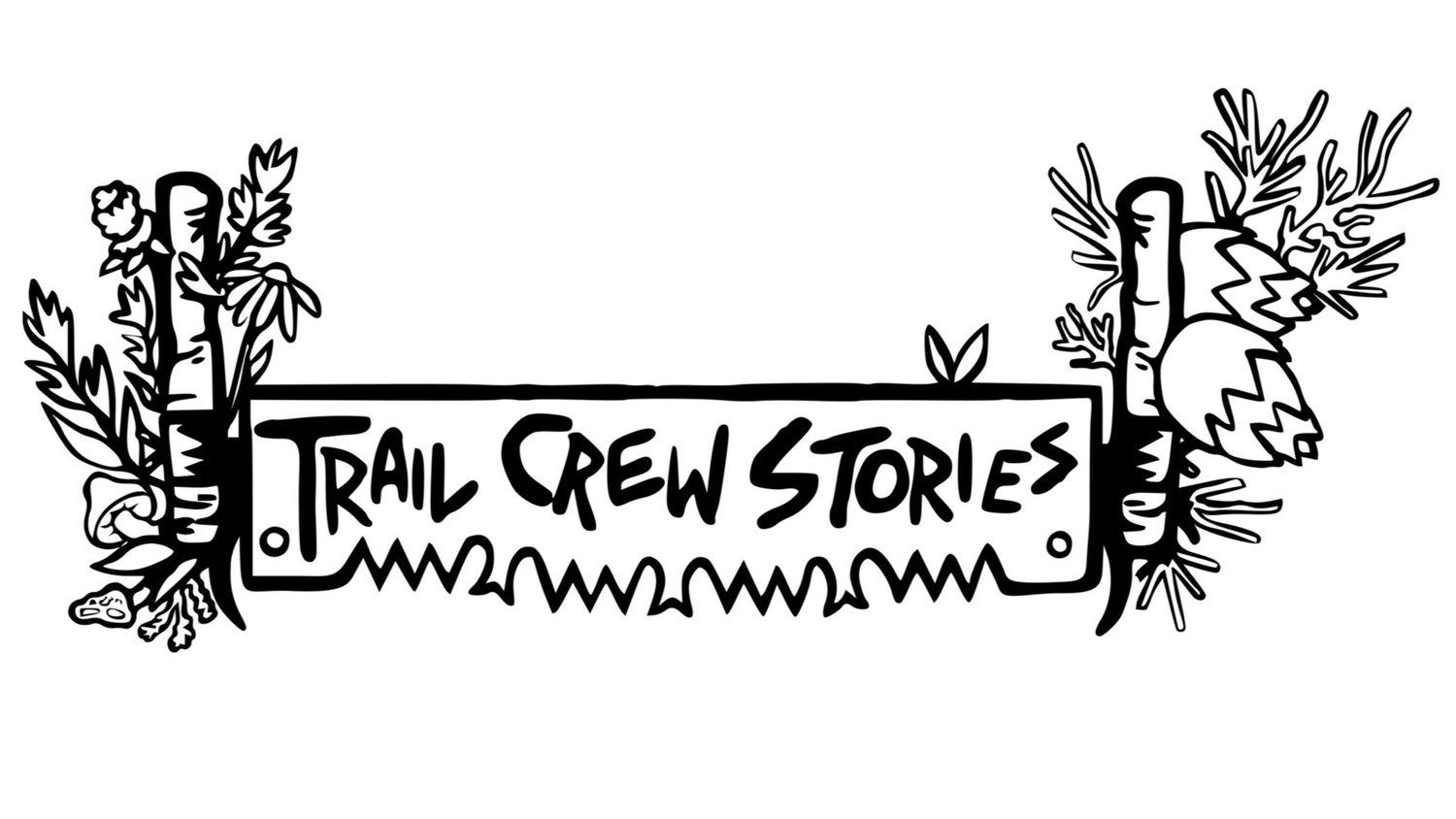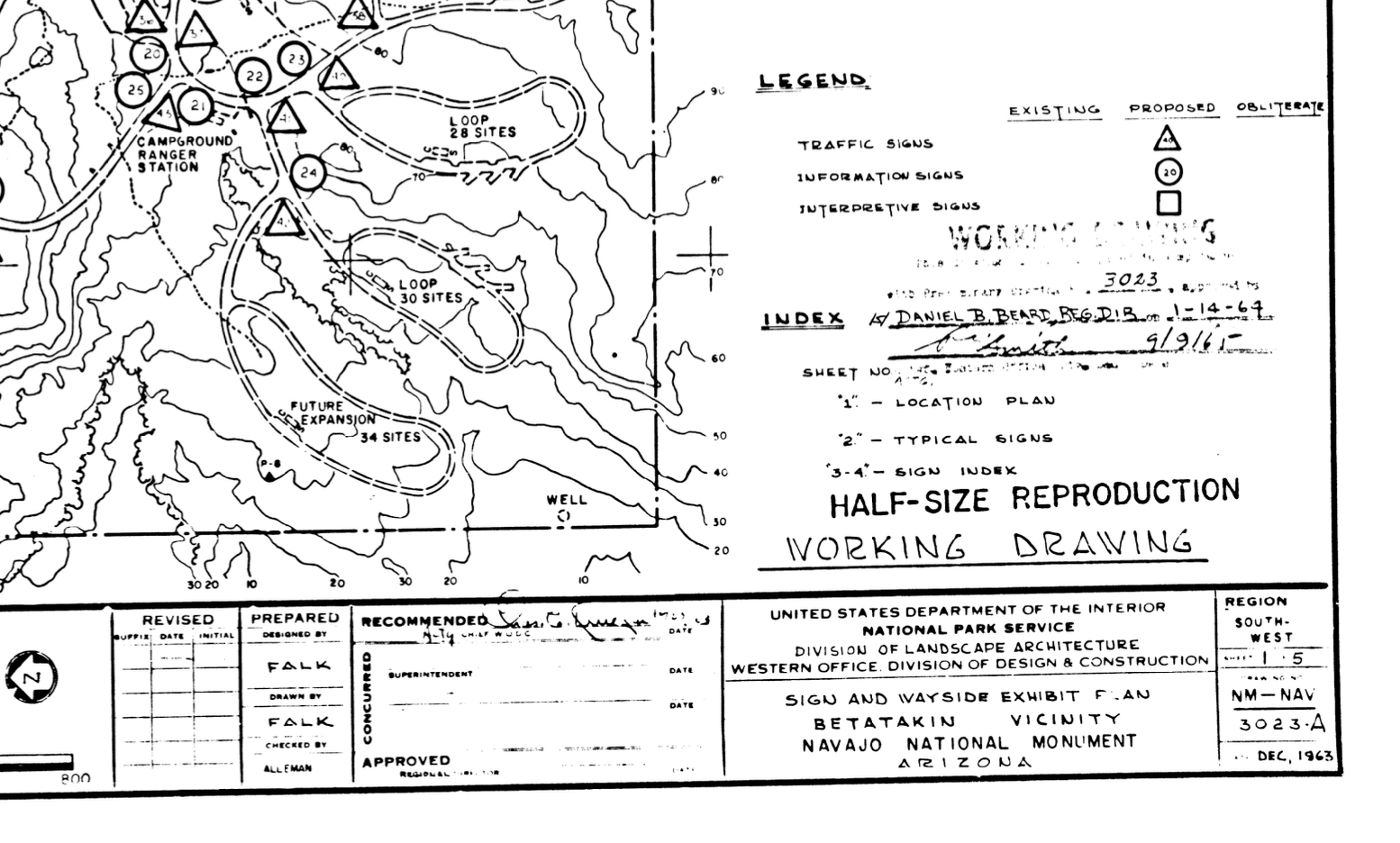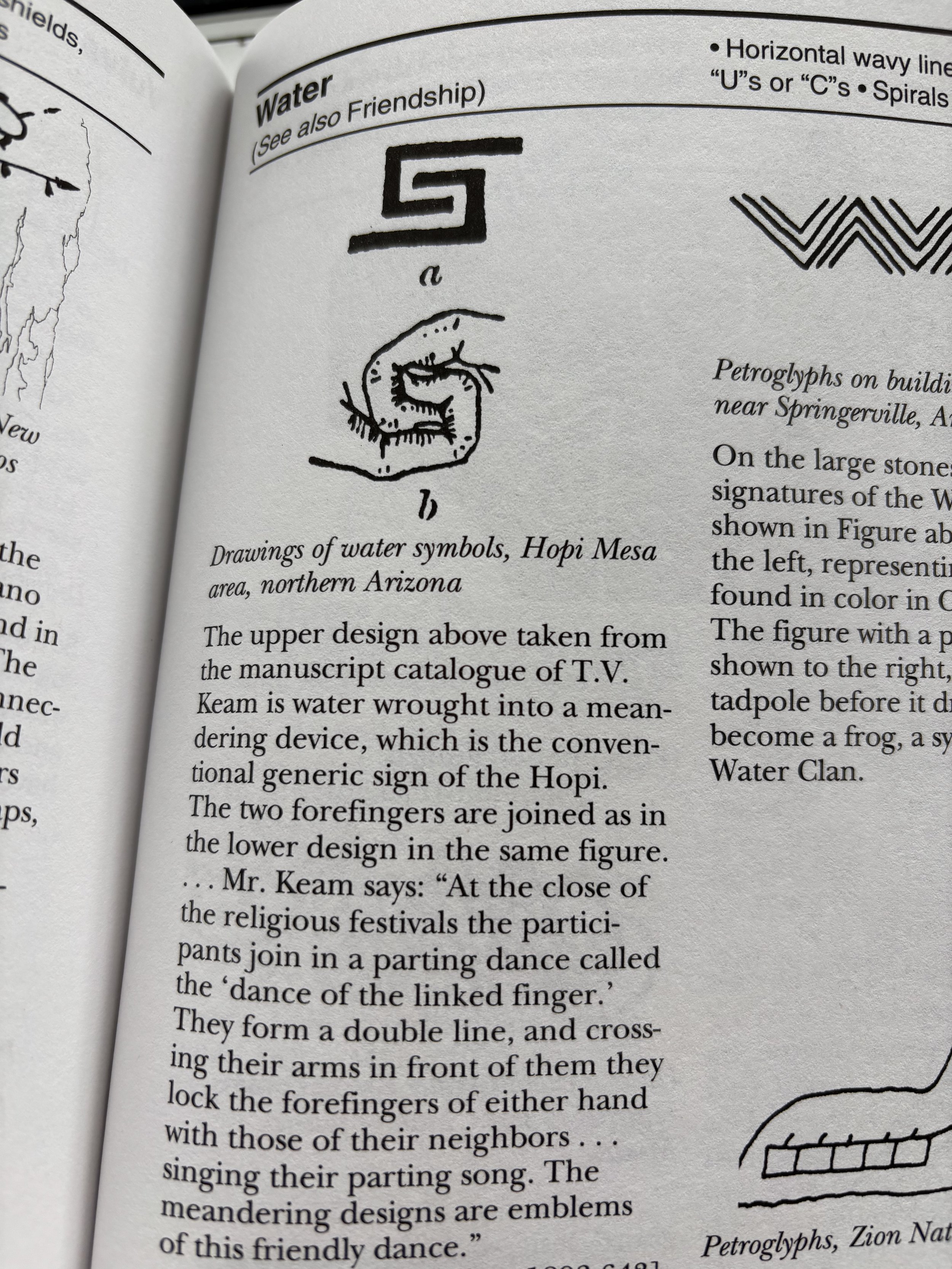Sign Study: Navajo National Monument
Entrance sign at Navajo National Monument.
Navajo National Monument has the most beautiful signs I’ve ever seen at a National Park site.
Nestled in the heart of the Navajo Nation, Navajo National Monument protects several ancient cliff dwellings and cultural sites which were last occupied around 1300 CE. Human occupation of the region dates back some 10,000 years. Although the monument was one of the first park sites established under the Antiquities Act in 1909, its remote location and lack of infrastructure kept visitation to a minimum for most of the 20th century. NPS historian Hal Rothman describes the early days of Navajo National Monument: “Hard to reach, ignored by the hierarchy of the agency, and lacking most of the amenities common in the park system, Navajo was clearly apart from the mainstream of the Park Service.”
The NPS installed these signs during the “Mission 66” era—a ten-year, $700-million-dollar spending package to improve infrastructure across the park service to commemorate the fiftieth anniversary of the agency in 1966. These signs are a great example of “parkitecture,” a general philosophy of vernacular design that seeks to harmonize with the cultural and natural history of the surrounding landscape. Signs at Canyon de Chelly and Bandelier also have artful designs, but not as colorful or abundant as Navajo NM.
Entrance sign at Bandelier National Monument. NPS Photo.
It’s not clear who designed the signs, and how thoughtfully they considered the symbols on them. Poking around some NPS resources, I found the 1965 “Signs and Wayside Exhibit Plan” for the park, and the designer is credited as “FALK.” It’s not clear if Falk came up with the motifs, or merely drafted the plan.
1965 "Signs and Wayside Exhibit Plan.” “FALK” is credited on the bottom left.
Snippets from the 1965 Signs and Wayside Exhibit Plan.
Another suspected designer is Cecil Doty, the architect behind the multitude of park buildings around the country, and designer of the visitor center at Navajo National Monument. Some of Doty’s previous buildings—such as the Hurricane Ridge Lodge at Olympic National Park—included woodworking details and Native American symbols. So it’s possible that Doty designed the signs, but without further evidence, we can only speculate.
From A Field Guide to Rock Art Symbols of the Greater Southwest by Alex Patterson.
Which begs the question: are these signs adequate representations of the cultural landscape? Are they intentional representations of cultural history, or merely projections of what visitors and park administrators thought was a vernacular design?
My opening sentence probably gave away that I like these signs. I think they are beautiful. But I’m disappointed I couldn’t find out more about them: who designed them and what inspired their design elements. Also disappointing: the generic, English trail names (Aspen, Canyon View, Sandal), which highlight a lost opportunity to incorporate native languages and place-names into the landscape. Ironically, in seeking a vernacular design, park managers ignored the linguistic vernaculars of the region which is the Diné and Hopi language.
When done intentionally, vernacular design connects people to the broader historical and natural context of a space. While beautiful, the intentionality of the signs at Navajo National Monument remains a bit of a mystery for the hasty researcher such as myself. Perhaps another inquisitive design sleuth can join me in this rabbit hole, but for now, I can only disappointingly conclude with a shrug.
Sources:
Allaback, S. 2000. Cecil Doty. In MISSION 66 VISITOR CENTERS: The History of a Building Type. essay, U.S. Department of the Interior, National Park Service, Retrieved from https://web.archive.org/web/20041209071553/http://www.cr.nps.gov/history/online_books/allaback/vc.htm.
Rothman, Hal K. 1991. Navajo National Monument: A Place and Its People. An Administrative History. National Park Service Division of History, Southwest Cultural Resources Center. Santa Fe, New Mexico.
Retrieved from: https://www.nps.gov/parkhistory/online_books/nava/adhi/index.htm
Tweed, W., Soulliere, L., & Law, H. (1977, February). National Park Service: Rustic architecture 1916-1942. National Parks Service. https://www.nps.gov/parkhistory/online_books/rusticarch/introduction.htm
U.S. Department of the Interior. (n.d.). Navajo National Monument (U.S. National Park Service). National Parks Service. https://www.nps.gov/nava/index.htm









